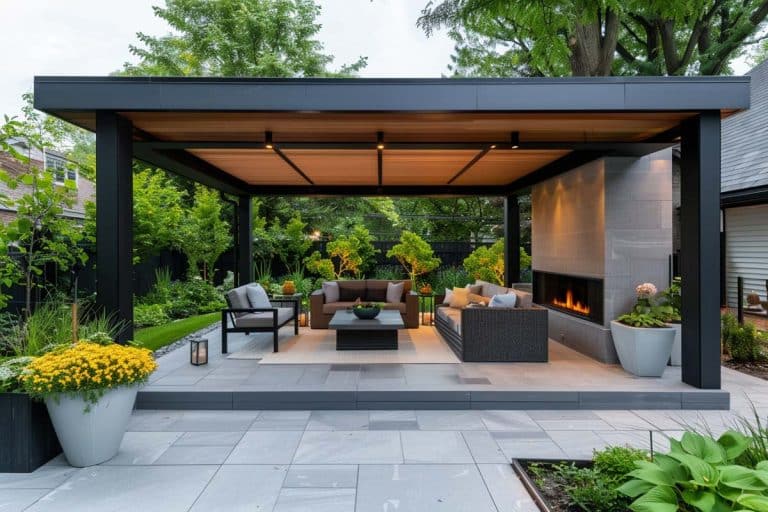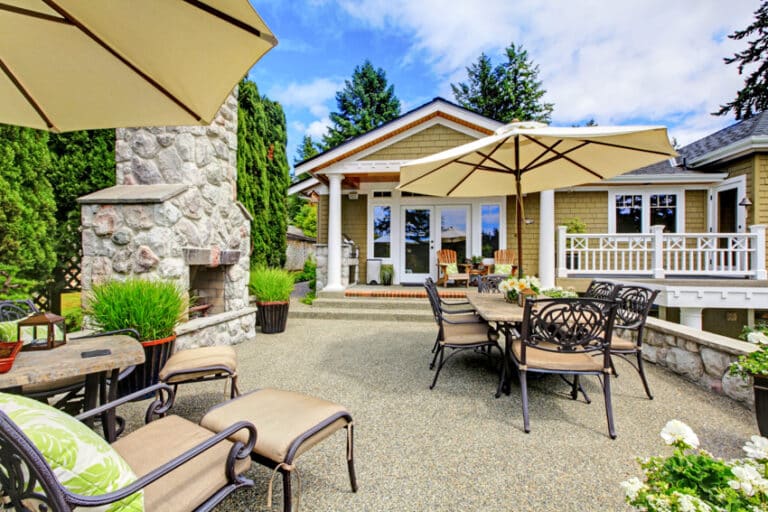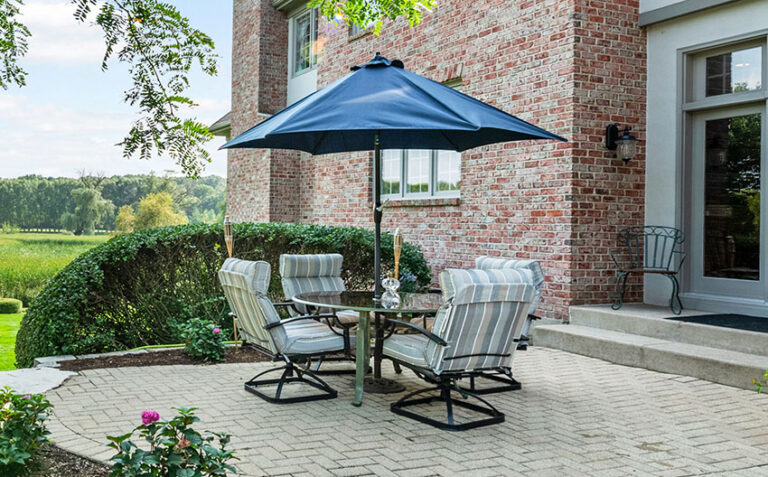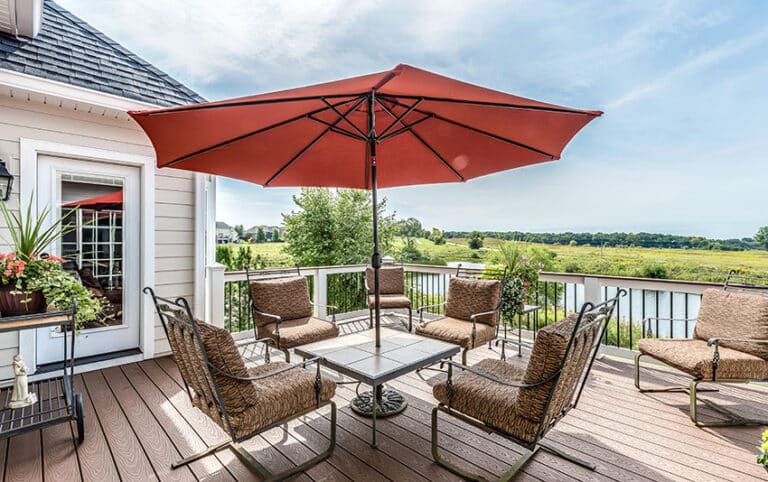Deck Skirting Ideas (Materials & Design Guide)
An elevated deck is a great addition to any home with an outdoor pace. It provides you with an excellent area to relax and entertain and enjoy some fresh air, sunshine, and great views.

There are many things you need to consider when building an elevated deck, one element that people don’t automatically realize is a part of their plans is what type of baseskirting you should have.
What Is A Deck Skirt?
Deck skirting is basically a wall or “skirt” that is placed around the parameter of your elevated deck. The main goal of skirting is to enclose and hide its underside.
Generally, the proper skirting to use depends on the style of the structure. Most homeowners decide to add skirting that will match the material that their decks are made of.
However, some look to make a statement with their base screening, using contrasting materials to make the decking stand out.
Deck Skirting Materials: Seven Best Options
One of the most important things to consider is whether you want a material that matches your deck or contrasts with it. The material that you choose to use will go a long way to create the “look” that you want for your deck.
Wood

Wood is a popular material for outdoor decks and is also a popular choice of material for skirting. Some homeowners choose to use solid wood boards for their enclosures. Commonly, solid wood boards are either installed horizontally or vertically.
Vertical wooden boards, especially if they look “rough” or are unfinished are a great option if you are going for a rustic feel to your deck. However, if you have a short structure, installing solid wood boards vertically will make your design appear taller. See more wood deck designs here.
Wood Lattice

Wood lattice is a classic deck skirting material idea. Chances are, if you’ve admired wooden decks, you noticed their wood lattice. A lattice is basically created by crisscrossing strips of material. The end result is a grid with diamond-shaped openings.
Wood lattice surrounds are an attractive way to accent your decking and hide the underside. It also allows for better air circulation. One disadvantage of wood lattices compared to solid wood is that they are more fragile.
Composite
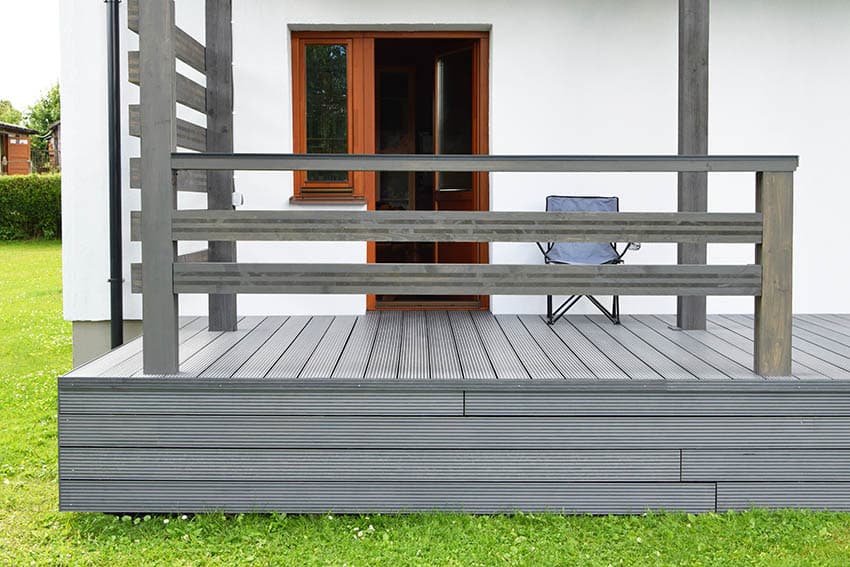
Some modern decks are made of composite materials. Composite decking material combines plastic and wood fiber to create “boards” that are lightweight yet very strong. You can basically use composite material the way you would solid wood boards or even use it to create lattice work.
Composite materials are rising in popularity as decking material because, while it can be made to resemble wood, it is sturdier. Composite materials are weather-resistant and stain-resistant. However, they can get slippery when wet.
Metal
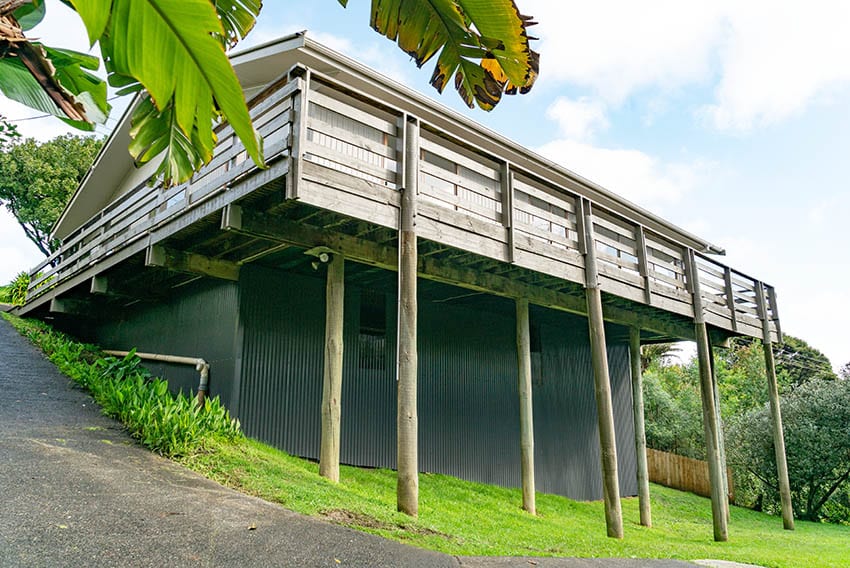
If you are going for a modern or industrial style, incorporating sheet metal in your deck surround will suit your overall aesthetic.
There are also other creative ways to use metal. Sheet metal can come cut in attractive or fanciful patterns, including into latticework. You can also paint metal, so it is a very customizable option. Take note, however, if you decide to use metal you need to make sure it is rust-resistant.
Plants
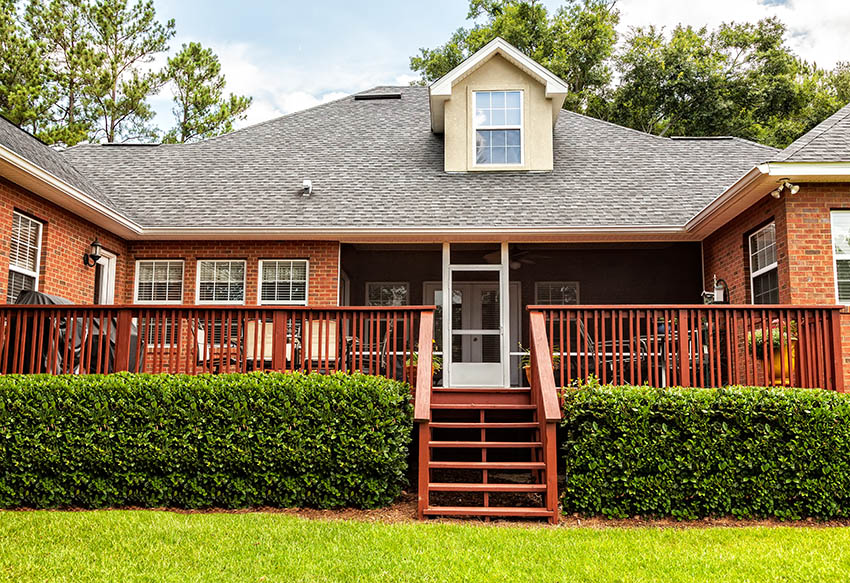
One particularly charming way to “cover-up” the underside of your deck is to use plants. You can plant shrubs or bushes in the ground surrounding your it to create a natural enclosure. It’s similar to planting a hedge around your home.
This is a cool way to create a decking skirt; however, it can be high maintenance. You’re going to have to keep the plants alive and healthy as well as trim them regularly.
Brick
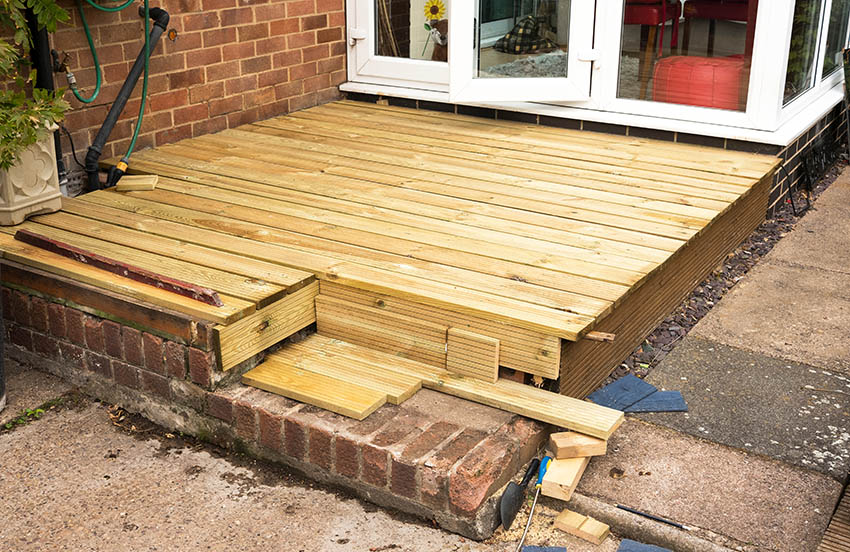
Bricks are also an attractive option for ground-level screening. They are durable and weather-resistant and look great in an outdoor setting.
The biggest disadvantages of using brick is that they tend to be difficult to install and expensive. Brick deck skirting isn’t really a DIY project and you might need to hire a mason. This makes a brick one of the more expensive materials.
Faux Stone
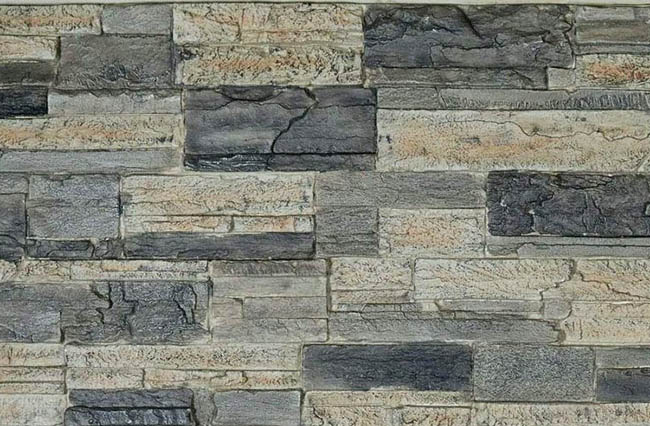
Faux stone is becoming a popular material because of its versatility. They are available in a variety of styles that mimic the look and feel of real stone. If you are going for a rustic or country look, this is a great material to use.
Faux stone is durable like natural stone but lightweight and easier to work with. As a result, it is more cost-effective to use faux stone than it would be to use real stone or bricks.
Deck Base Enclosure Design
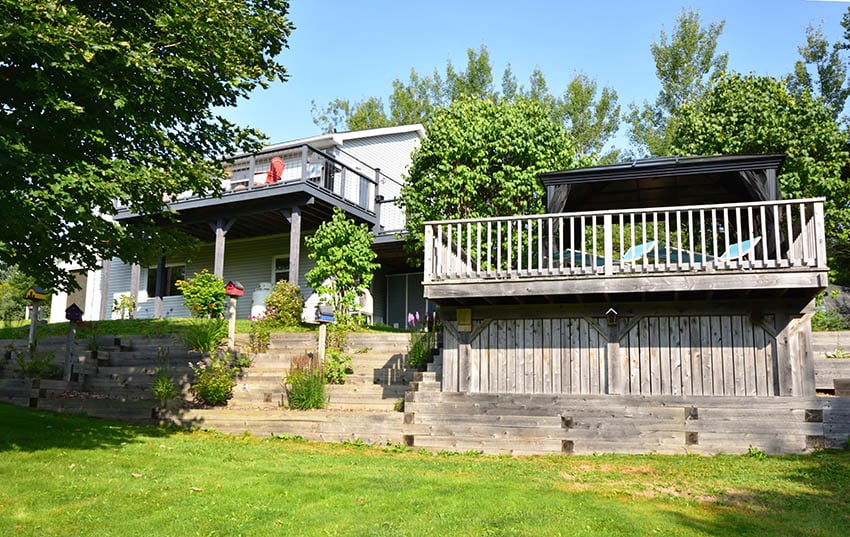
Aside from the material, your skirting design will depend on the function and purpose of your enclosure. There are several functions it can serve, aside from aesthetics.
• Storage
One good reason to build deck skirting is to turn the space underneath your deck into extra storage space. Keep in mind, however, is its still outdoors so you don’t want to store something sensitive to dampness or dirt. 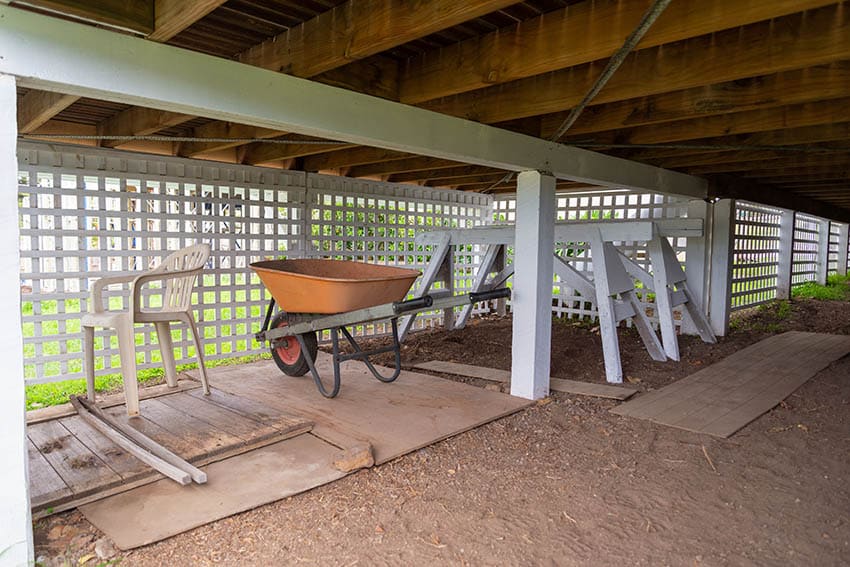
• Keep Out Animals
Installing deck skirting will prevent animals such as raccoons, squirrels, or skunks from using the underside of your backyard deck as a nest or burrow.
• Ventilation
Ventilation is also an important function of deck skirting. The type of ventilation that you need will depend on the deck material.
If you have a wood lattice, the design will naturally offer good airflow. You might, however, want to install mesh under the latticework to keep animals out.
If you use solid wood boards, leave at least one inch of space between the boards to get proper ventilation.
The need for ventilation is one reason why brick and faux stone are more expensive than other decking materials. You will have to install a vent system to keep the area properly ventilated.
Skirting Maintenance

Proper deck skirting maintenance is important to extending the life of your structure. We touched on maintenance when we discussed materials earlier. However, in general, here’s what you need to do to maintain it.
Cleaning
Whatever skirting material you use will need to be cleaned, the difference comes in how often they need cleaning. Wood lattice is probably the most difficult to maintain, aside from plants.
For lattice, use a leaf blower or brush to remove any debris like cobwebs, dirt, and leaves, Then spray down the surface with water. Next, mix soap and water in a spray bottle and apply the solution to the surface.
Use a soft bristle brush to scrub the wood surfaces and remove visible stains and dirt. If you have stubborn mold and mildew stains mix a solution of 1 part vinegar to 2 parts water and repeat the process. After the application of the mixture, rinse the surfaces down with the hose and allow them to dry.
To prevent stubborn accumulation of hard-to-remove dirt and debris, occasionally spray down the surfaces and clean up any bird droppings when you notice them
Weatherproofing
In addition to cleaning, deck skirting will probably need you to apply and reapply weather-proofing to keep the wood from warping and weathering. Composite material, brick, and faux stone are probably the sturdiest and easiest to maintain. All you will need to do is clean them every now and then with just some warm water and soap.
As long as you make sure that metal surfaces are rust and weatherproof, you can probably get away with only the occasional cleaning (again warm water and soap). If you decide to paint the metal, however, you might have to repaint it now and then as well as maybe apply some weatherproofing.
For a lattice wood preservative, you can use a clear wood sealer or a semi-transparent stain with water-repellent.
For more related designs visit our gallery of deck railing ideas.

